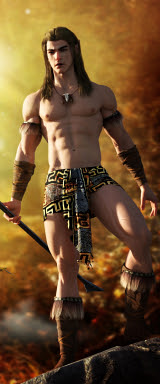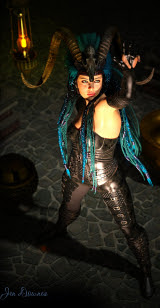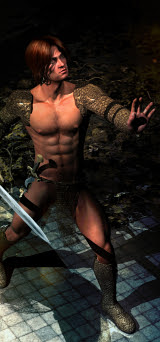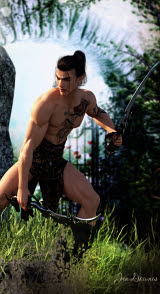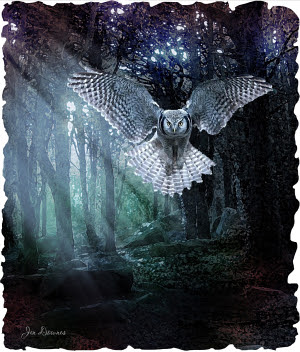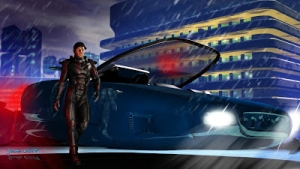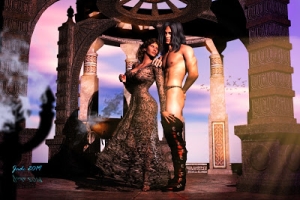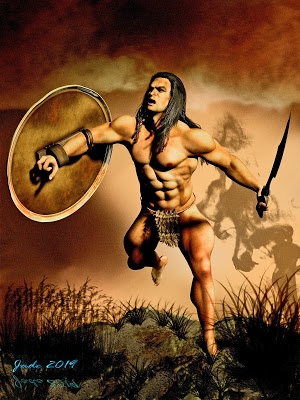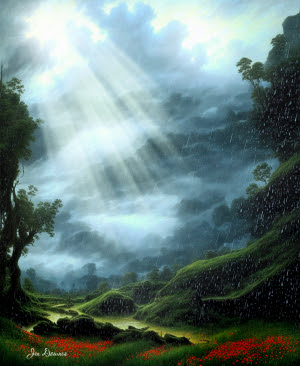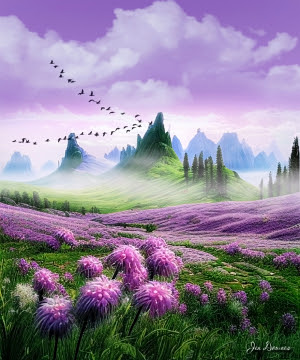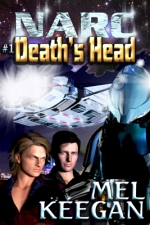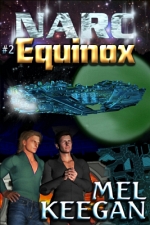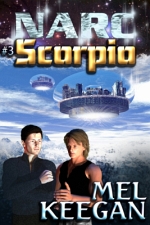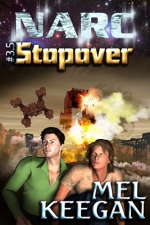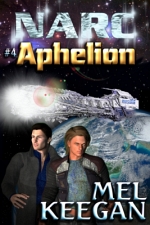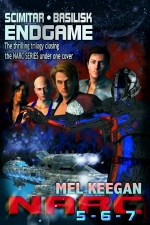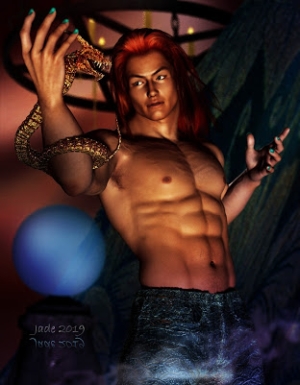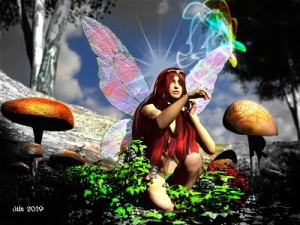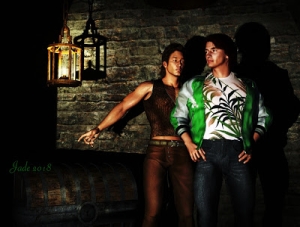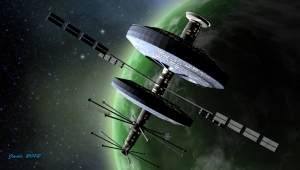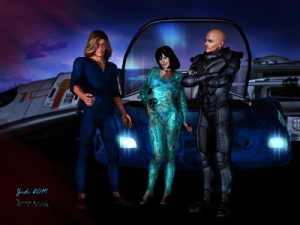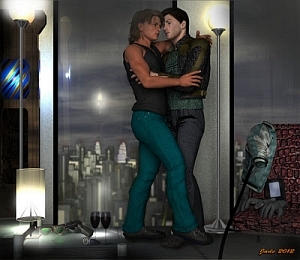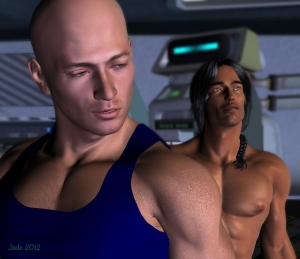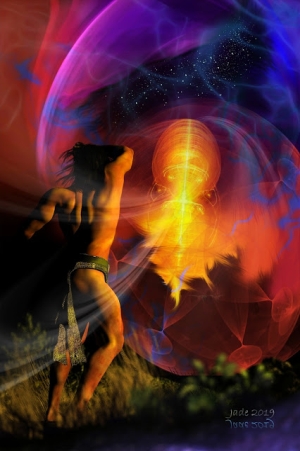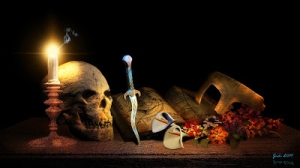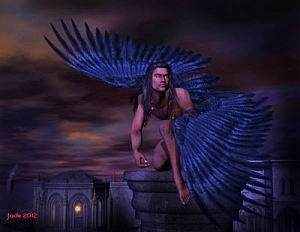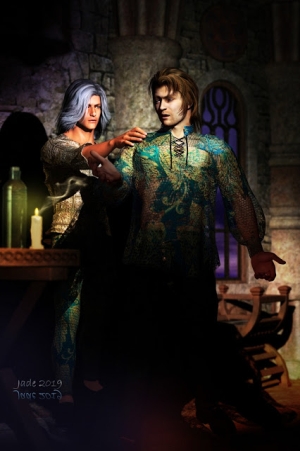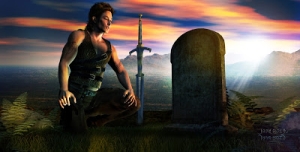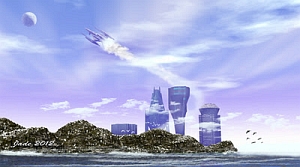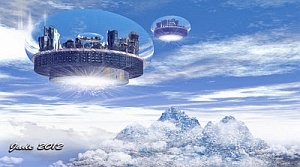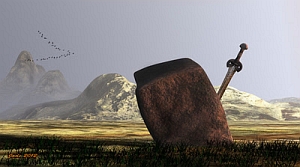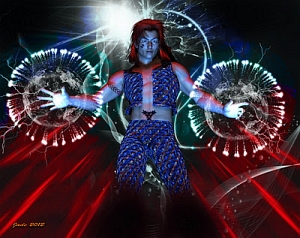 I was looking at the Michael 4-based elven archer from a couple of days ago, and looking at those pointed ears, and thinking to myself, there's not a world of difference between the ears on Legolas and Spock (and yes, I know, I'm a product of the cinema generations. I can read, but. Honest). And this train of thought lead -- logically, I guess -- to wondering ...
I was looking at the Michael 4-based elven archer from a couple of days ago, and looking at those pointed ears, and thinking to myself, there's not a world of difference between the ears on Legolas and Spock (and yes, I know, I'm a product of the cinema generations. I can read, but. Honest). And this train of thought lead -- logically, I guess -- to wondering ...I already cast Michael 4 as the archer; how about if I went in there and changed the skin tones from very pale to, uh, green ... and changed the hair from golden blond to black. Leave the pointed ears alone, but change the costume from fantasy to science fiction.
How hard could that be? So you start with this:
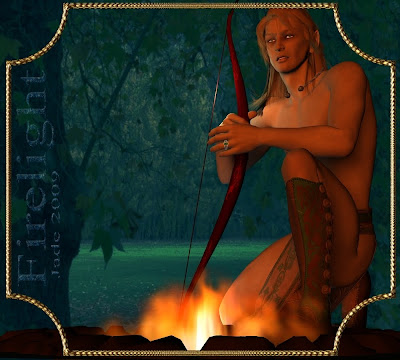 ...and by changing Michael 4's attributes and props around you end up with an alien beauty! I took out the kirtle and the props (the bow, quiver, ring and torc), and then I added in the SF costume:
...and by changing Michael 4's attributes and props around you end up with an alien beauty! I took out the kirtle and the props (the bow, quiver, ring and torc), and then I added in the SF costume: This a real mix-and-match ensemble. It's the vee-neck sweater from the Stylin' pack, the pants from the Hardcore M4 Utilize pack, the boots from the Wood God pack, the "Odin" texture from the Dark Gods add-on pack, with the fur trim turned off; the leather jacket from the Utilitize, the Mon Chevalier hair made back and really long ... and then the fun started, because I changed the color of everything.
This a real mix-and-match ensemble. It's the vee-neck sweater from the Stylin' pack, the pants from the Hardcore M4 Utilize pack, the boots from the Wood God pack, the "Odin" texture from the Dark Gods add-on pack, with the fur trim turned off; the leather jacket from the Utilitize, the Mon Chevalier hair made back and really long ... and then the fun started, because I changed the color of everything.One of the best things about DAZ is that you can get in and change the color of absolutely every last thing, down to the toenails! For this character, I really wanted him to come up green but still be believable as a mammalian species, so I didn't make him too green when I set the diffuse color, and also for variety I set the ambient color to a blue-green and the specular to yellowish-green...
Diffuse, ambient, specular ... glossiness, index of refraction ... what in the world is all this stuff? Well, these are the ways we use to describe how light behaves. And it's practically impossible for me to translate into English! You can be told, and told, and told again, and it doesn't make any sense at all till one day you're looking right at something and you see the effect. Then, whump, it hits you, and you just know.
Ambient is the color something is when no light is shining on it at all -- other words, in the deep shadows. So something that's green might have deep blue shadows...
Specular is the color something shines, when a light is shone in it -- and unfortunately this changes every time you change the color of the light that's being shone on the surface, so this one is very hard to grasp.
Diffuse is the color something "really" is, before shadows and lights affect it at all.
Now ... this particular Michael 4 character is very pale -- I made him that way deliberately because I was thinking "Mirkwood archer," and we all know how pale Legolas is (or is it Orlando Bloom who was pale?) ...
 When you cast light on this model, you don't get too much "interference" from the diffuse color of the surface, because it's so pale. So when the firelight hits him (see above), it really has an effect.
When you cast light on this model, you don't get too much "interference" from the diffuse color of the surface, because it's so pale. So when the firelight hits him (see above), it really has an effect.When a surface ... skin, sports car, beachball, anything ... has a strong color to begin with, though, and you shine a color on it, you can get huge departures. A bright yellow car standing in a red light is going to look orange. A bright blue beachball sitting in a yellow light turns green ... and so on. The color change is the "specular" value ... in other words, the color something glows when you shine a light on it. And, obviously, every time you change the color of the light, the whole thing changes again.
This is why working with lights is probably the hardest thing in DAZ 3D. You have to get a grasp on about five things simultaneously ... might help if you could juggle. With cactus plants.
 The screen capture shows the DAZ Studio 3 workspace for working with surfaces ... the Surfaces pane is the bottom left one. (Have a look at this at 1000 pixels wide -- click on our hero.) It's basically a loooooong list of things you can change. You can set the color of everything.
The screen capture shows the DAZ Studio 3 workspace for working with surfaces ... the Surfaces pane is the bottom left one. (Have a look at this at 1000 pixels wide -- click on our hero.) It's basically a loooooong list of things you can change. You can set the color of everything.And here's his portrait ... his fan photo:
 Jade, 23 December
Jade, 23 December


















